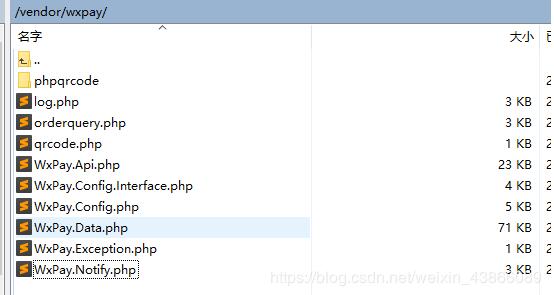可以使用数组下标操作符 ([ ]) 访问数组的各个元素。 如果在无下标表达式中使用一维数组,组名计算为指向该数组中的第一个元素的指针。
?
|
1
2
3
4
5
6
7
|
// using_arrays.cpp
int main() {
char chArray[10];
char *pch = chArray; // Evaluates to a pointer to the first element.
char ch = chArray[0]; // Evaluates to the value of the first element.
ch = chArray[3]; // Evaluates to the value of the fourth element.
}
|
使用多维数组时,在表达式中使用各种组合。
?
|
1
2
3
4
5
6
7
8
9
10
11
12
13
14
15
16
|
// using_arrays_2.cpp
// compile with: /EHsc /W1
#include <iostream>
using namespace std;
int main() {
double multi[4][4][3]; // Declare the array.
double (*p2multi)[3];
double (*p1multi);
cout << multi[3][2][2] << "\\n"; // C4700 Use three subscripts.
p2multi = multi[3]; // Make p2multi point to
// fourth "plane" of multi.
p1multi = multi[3][2]; // Make p1multi point to
// fourth plane, third row
// of multi.
}
|
在前面的代码中, multi 是类型 double 的一个三维数组。 p2multi 指针指向大小为三的 double 类型数组。 本例中该数组用于一个,两个和三个下标。 尽管指定所有下标更为常见(如 cout 语句所示),但是如下的语句 cout 所示,有时其在选择数组元素的特定子集时非常有用。
初始化数组
如果类具有构造函数,该类的数组将由构造函数初始化。如果初始值设定项列表中的项少于数组中的元素,则默认的构造函数将用于剩余元素。如果没有为类定义默认构造函数,初始值设定项列表必须完整,即数组中的每个元素都必须有一个初始值设定项。
考虑定义了两个构造函数的Point 类:
?
|
1
2
3
4
5
6
7
8
9
10
11
12
13
14
15
16
17
18
19
20
|
// initializing_arrays1.cpp
class Point
{
public:
Point() // Default constructor.
{
}
Point( int, int ) // Construct from two ints
{
}
};
// An array of Point objects can be declared as follows:
Point aPoint[3] = {
Point( 3, 3 ) // Use int, int constructor.
};
int main()
{
}
|
aPoint 的第一个元素是使用构造函数 Point( int, int ) 构造的;剩余的两个元素是使用默认构造函数构造的。
静态成员数组(是否为 const)可在其定义中进行初始化(类声明的外部)。例如:
?
|
1
2
3
4
5
6
7
8
9
10
11
12
13
|
// initializing_arrays2.cpp
class WindowColors
{
public:
static const char *rgszWindowPartList[7];
};
const char *WindowColors::rgszWindowPartList[7] = {
"Active Title Bar", "Inactive Title Bar", "Title Bar Text",
"Menu Bar", "Menu Bar Text", "Window Background", "Frame" };
int main()
{
}
|
表达式中的数组
当数组类型的标识符出现在 sizeof、address-of (&) 或引用的初始化以外的表达式中时,该标识符将转换为指向第一个数组元素的指针。 例如:
?
|
1
2
|
char szError1[] = "Error: Disk drive not ready.";
char *psz = szError1;
|
指针 psz 指向数组 szError1 的第一个元素。 请注意,与指针不同,数组不是可修改的左值。 因此,以下赋值是非法的:
?
|
1
|
szError1 = psz;
|
相关文章
猜你喜欢
- 64M VPS建站:怎样优化以提高网站加载速度? 2025-06-10
- 64M VPS建站:是否适合初学者操作和管理? 2025-06-10
- ASP.NET自助建站系统中的用户注册和登录功能定制方法 2025-06-10
- ASP.NET自助建站系统的域名绑定与解析教程 2025-06-10
- 个人服务器网站搭建:如何选择合适的服务器提供商? 2025-06-10
TA的动态
- 2025-07-10 怎样使用阿里云的安全工具进行服务器漏洞扫描和修复?
- 2025-07-10 怎样使用命令行工具优化Linux云服务器的Ping性能?
- 2025-07-10 怎样使用Xshell连接华为云服务器,实现高效远程管理?
- 2025-07-10 怎样利用云服务器D盘搭建稳定、高效的网站托管环境?
- 2025-07-10 怎样使用阿里云的安全组功能来增强服务器防火墙的安全性?
快网idc优惠网
QQ交流群
您的支持,是我们最大的动力!
热门文章
-
2025-05-29 41
-
2025-05-25 94
-
2025-05-29 57
-
利用VS2025创建Web项目,并发送到IIS,以及IIS与ASP.NET配置
2025-05-29 18 -
2025-06-04 97
热门评论










